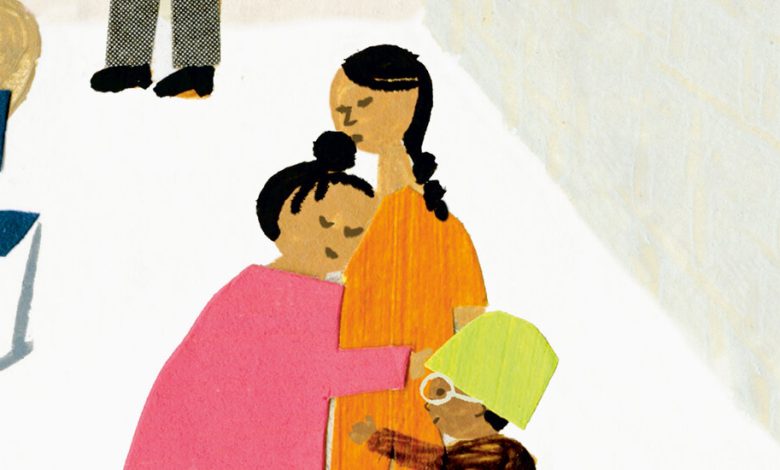Are These Topics Too Adult for the Youngest Readers? Take a Look.

A picture book about a same-sex penguin couple at the Central Park Zoo was made inaccessible to young students in a Florida school district. The history of the Gay Pride flag was one of the most widely banned books in the country. An illustrated story about surviving slavery in America was prohibited in classrooms.
The number of books removed from schools and challenged in libraries has risen sharply over the past three years. Many of the books that receive the most attention are graphic novels written for teenagers or classics, like Toni Morrison’s “Beloved.” But picture books intended for young children have also been restricted, challenged and removed. Most of these books, according to the free speech organization PEN America, have protagonists who are L.G.B.T.Q. or people of color.
Those who push for restricting access to these titles say they are trying to protect young children from topics that they’re not ready to stumble upon while alone in a library, or that they’re too young to encounter at all. Those who believe these books should be available say it is crucial for young people to learn about characters different from themselves and to see their own lives reflected on the page.
Book restrictions have spread around the country in a variety of ways. Parents and organizations have created lists of titles they consider inappropriate or dangerous — lists often used as references by those who want to restrict certain books in their own communities. Individuals can work through their local school district to challenge one book, or multiple books at a time. In some states, such as Florida and Utah, new state laws have led to the removal of untold numbers of books.
Here’s a look at a few books that have each been banned at least once in a public school district, and what their critics found objectionable.
And Tango Makes Three
By Justin Richardson and Peter Parnell
Illustrated by Henry Cole
In this book, two male penguins at the Central Park Zoo raise a chick, whom zookeepers name Tango. The authors sued two school districts in Florida that pulled the book after the state passed a law prohibiting instruction on sexual orientation in certain grades.
Worm Loves Worm
By J. J. Austrian
Illustrated by Mike Curato
In this story, two worms in love plan their wedding. Their friends want to know who will wear a dress and who will wear a tuxedo, since both worms are happy to be either the bride or the groom. A conservative group in Florida objected to the book, saying it inappropriately subjected young readers to an L.G.B.T.Q. agenda.
Can I Touch Your Hair?: Poems of Race, Mistakes, and Friendship
By Irene Latham and Charles Waters
Illustrated by Sean Qualls and Selina Alko
This collection of poems explores how children experience race in school, out in the world and with their peers. A website that rates books based on content it considers objectionable said the book might not be appropriate for young people because it contains “controversial racial commentary.”
Pride: The Story of Harvey Milk and the Rainbow Flag
By Rob Sanders
Illustrated by Steven Salerno
“Pride” celebrates the story of Harvey Milk, a gay rights activist, and the Gay Pride flag, which was created by a designer named Gilbert Baker. According to PEN America, this was one of the most banned picture books of the 2021-22 school year, the most recent year for which they have released a report.
I Am Jazz
By Jessica Herthel and Jazz Jennings
lIlustrated by Shelagh McNicholas
This book, based on the experience of its co-author Jazz Jennings, is about a transgender child. PEN America said this book was tied with “Pride” as the most banned book of the 2021-22 school year.
Milo Imagines the World
By Matt de la Peña
Illustrated by Christian Robinson
Milo, the main character in this book, creates stories and pictures about the people around him as he travels to visit his mother in prison. The author and illustrator team behind this book won a Newbery Medal and a Caldecott Honor for another book they created, “Last Stop on Market Street.” A book-rating website raised concerns about “Milo Imagines the World” because it refers to incarceration and includes an illustration of two women getting married.
The 1619 Project: Born on the Water
By Nikole Hannah-Jones and Renée Watson
Illustrated by Nikkolas Smith
In this book, a student is asked to trace her family lineage for a school project, but her roots are obscured by slavery and she can go back only three generations. Her grandmother then tells her the story of her ancestors in Africa, and how they survived the Middle Passage and slavery. The 1619 Project began as a special issue of The New York Times Magazine. Texas and Florida have prohibited the 1619 Project from being taught in schools.
Sex Is a Funny Word:
A Book About Bodies, Feelings, and You
By Cory Silverberg
Illustrated by Fiona Smyth
A book about bodies that includes discussion of different kinds of families and gender identities, “Sex Is a Funny Word” has been flagged by multiple websites that rate books for objectionable content. Those websites highlighted the book for having graphic illustrations and “alternate gender ideologies.”
Sofia Valdez, Future Prez
By Andrea Beaty
Illustrated by David Roberts
In this book, a girl tries to convince her town’s government to build a new park. It topped the New York Times best-seller list. One book-rating website highlighted as problematic several pages in which a character wears a hat with a pink triangle pin that appears to be a Gay Pride symbol.